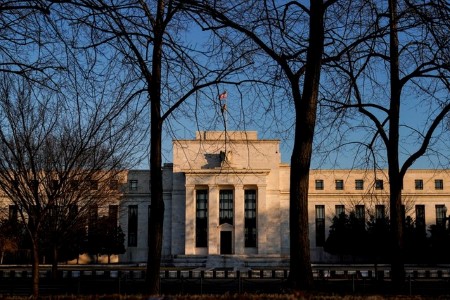




Policy Rate Updates: Double cut finale
 DOWNLOAD
DOWNLOAD

Monthly Economic Update: One for the road
 DOWNLOAD
DOWNLOAD

Inflation Update: Still low, still slow
 DOWNLOAD
DOWNLOAD


Bond investors see ‘dovish hold’ from Fed, pile on yield curve steepeners

NEW YORK, July 30 (Reuters) – Bond investors, expecting the Federal Reserve to hold interest rates steady this week but signal that rate cuts are imminent, are betting that the US Treasury yield curve will become less inverted and eventually return to a normal positive slope.
The strategy involves bullish bets on short-dated Treasuries and reducing longer-dated exposure, a trade referred to as a “steepener” which pushes yields on longer-dated Treasuries higher than short-term maturities. Investors are compensated with a higher yield for taking risks over a longer period.
The widely watched two-year/10-year yield curve has been inverted for two years, the longest inversion in history, with the gap in yield at minus 22 basis points (bps).
With the focus on the yield curve, the Federal Reserve is widely anticipated on Wednesday, at the end of its two-day policy meeting, to keep its benchmark overnight rate in the 5.25%-5.50% range for an eighth straight meeting. Investors expect a “dovish hold” from Fed Chair Jerome Powell’s press conference at the end of the meeting, in which he is likely to signal that rates will be lowered as soon as September for the first time in more than four years.
Powell also has the Jackson Hole gathering of central bankers in late August to prepare the market for a rate cut. By then more data on inflation and this Friday’s July employment report could give policymakers the confidence they seek.
The rate futures market has priced in about 68 bps of total cuts this year starting in September, LSEG calculations showed a big jump from 30 bps just before the June meeting. Roughly three more cuts of 25 bps each are expected by June 2025.
In the Fed’s June rate forecasts the central bank had penciled in just one cut in 2024. Easing US inflation and a gradually slackening labor market have prompted a shift in rate expectations.
“The yield curve moved a significant amount in the last six weeks, but we are at these levels in October last year and it still comes down to an inverted curve, which is not normal,” said Greg Wilensky, head of US fixed income at Janus Henderson Investors, with assets under management of USD 352.6 billion.
“We’re going into a situation where the curve moves to a normal positive slope. There is plenty of room for it to go.”
BULL STEEPENERS
The spread between two-year and 10-year yields has narrowed by 30.4 bps since late June. The curve the last few weeks has mainly seen “bull steepeners,” where short-term yields have fallen more sharply than longer-dated ones, a typical prelude to the Fed’s starting an easing cycle.
Investors had bet aggressively in January on a steeper yield curve, as the markets priced in multiple rate cuts for 2024 after a dovish pivot from the Fed in December.
But those bets unraveled and the curve flattened even more as short-term yields surged above long-term ones amid a surprisingly durable economy and pesky inflation.
Going into this week’s Fed meeting, investors in the futures market sharply increased net long bets on short-dated Treasuries, such as US two-year notes, while net long positions on longer maturities have not risen as much or have declined. That mirrored bull steepeners that have been in place the last few weeks.
Friday’s data from the Commodity Futures Trading Commission showed asset managers last week increased their net long position on US two year notes to a record high.
Asset managers have also remained net long on US 5-year note futures, hitting an all-time peak in mid-July before slipping a bit last week,
“There is an urgency to get into the short end of the curve before yields start to fall in a more pronounced way,” said Chip Hughey, managing director of fixed income at Truist Advisory Services in Richmond, Virginia.
Net longs from institutional investors on US 10-year futures were largely flat last week.
“If the Fed starts its cutting cycle without a recession, buying any duration, or any longer bonds, won’t necessarily give you the same impact of being on the right part of the curve, like the 2s to 7s,” said Mike Sanders, portfolio manager and head of fixed income at Madison Investments in Madison, Wisconsin.
The firm, with USD 25 billion in assets, is currently overweight US three-year to seven-year Treasuries, reflecting expectations their yields will fall.
(Reporting by Gertrude Chavez-Dreyfuss; Editing by Alden Bentley and Leslie Adler)
This article originally appeared on reuters.com





 By Reuters
By Reuters